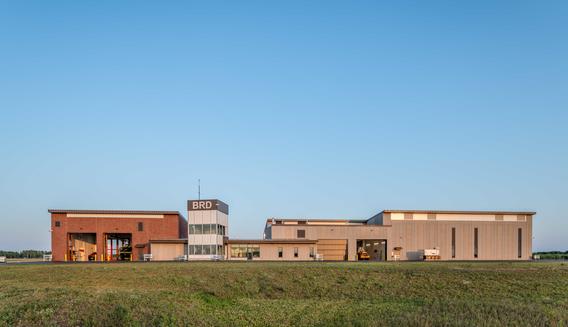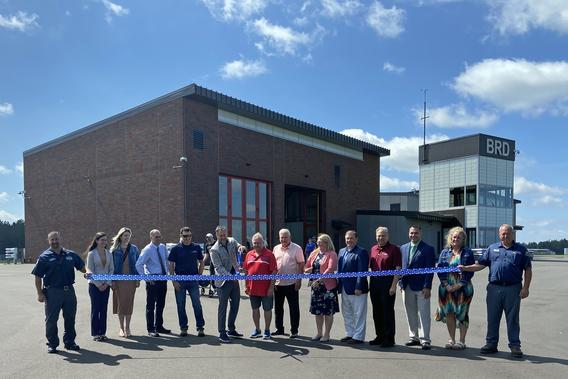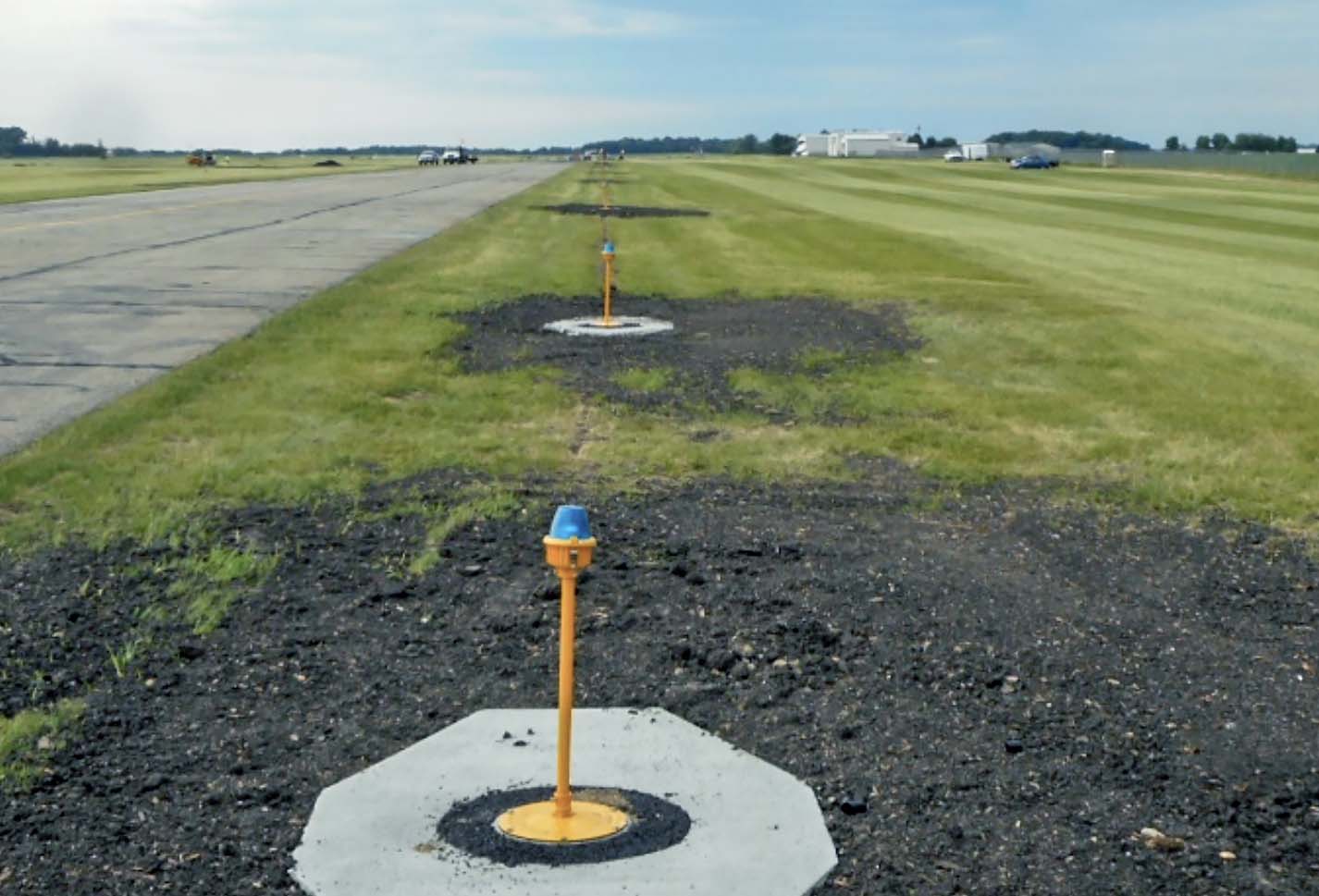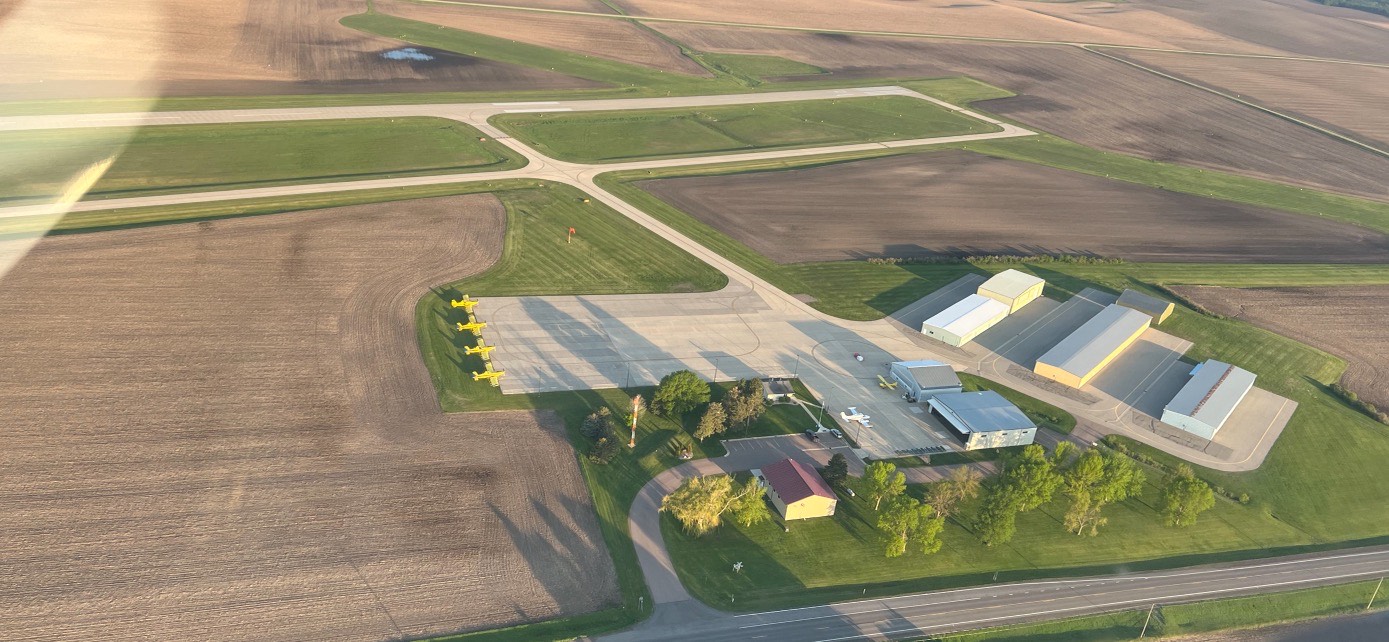
Although the COVID-19 pandemic wreaked havoc on the aviation industry, it also made funding available to meet some airports’ long-deferred needs.
Such was the case for Brainerd Lakes Regional Airport. A $15 million grant from the Coronavirus Aid, Relief, and Economic Security (CARES) Act of 2020 allowed it to build a facility that will not only make operations more efficient, but also offer vital safety improvements.
The need for more equipment storage space and a better situated fire station had existed for years. Project manager Michelle Baird of Mead & Hunt, the airport’s consultant, says the firm had completed preliminary planning to address the need, but the money wasn’t available—until the pandemic hit. “With the CARES money, it sort of fell into place,” she says. A new airport rescue and firefighting (ARFF) station and maintenance snow removal equipment (SRE) storage building, designed by Mead & Hunt and built by Hy-Tec Construction of Brainerd, was completed this summer after about 13 months of construction.
Brainerd Lakes Regional Airport is classified as a primary commercial service (Part 139) airport and has daily service by Delta Airlines’ operator SkyWest. In 2022 it averaged 104 operations per day.
According to the FAA, the site selected for an airport fire station is essential to reducing emergency response times to an aircraft-related incident. For Part 139 airports, the FAA requires that within three minutes from the time of an alarm, at least one ARFF vehicle must be able to reach the midpoint of the farthest runway serving air carrier aircraft from its assigned post and begin applying extinguisher. All other responding vehicles must be able to reach the incident within four minutes.
“Our response times from the old building to the midpoint of our furthest runway were over three minutes, which is over the FAA’s maximum limit,” says airport deputy director Kassandra Loftus. “Now our times are around one minute to the same location.”
The airport’s maintenance staff wear many hats. Besides mechanic duties such as servicing vehicles, snow removal duties, and operational duties such as Part 139 inspections, they are the primary ARFF responders to all aircraft incidents, Loftus says. All maintenance staff have their structural fire 1 and 2 certifications as well as their EMT license and ARFF certification; they are also certified weather observers.

The new facility is a major upgrade for the staff. In addition to the response-time advantage, the 40,000 square feet allow all of the maintenance staff to be housed in the same space, along with the equipment. The previous storage space for the snow removal equipment was so tight that attachments needed to be removed before being stored inside. The new space has a five-ton jib crane and vertical lift doors wide enough to pull through any piece of equipment that the airport has with a plow attached to it. This means staff won’t have to spend time taking apart and reassembling their equipment every time they need to use it.
The facility offers a number of other benefits. The watch room, located within a tower equipped with an interior viewing deck, provides an overview of the entire airfield, making it easier to watch aircraft during flight coverage and to spot wildlife. The watch room also features a new surveillance system, workstations, weather observing equipment, an emergency alerting system, and mobile radios.
A high-efficiency mechanical system, seamless lighting software, and HVAC automation were installed to help the airport save on energy costs over the long run. The building is mostly cooled and heated using a geothermic field, consisting of 18 wells, each 140 feet deep. Glycol is circulated down to the wells where the earth is a constant 55 degrees. This energy is used in both the summer and winter to boost the efficiency of the system.
In addition to the impressive functionality, the ARFF portion of the building sports a classic firehouse look, with red brick veneer tiles by contractor Wells Concrete.
Baird says she’s been working on these types of projects for 20 years, and this has been one of the smoothest. “There were no change orders, when 8 to 10 percent would be typical on a project this size,” she says. She credits the contractors—Hy-Tec—for much of this success. Loftus shares Baird’s opinion. “Roadblocks were minimal and short-lived, which led to the project being completed on time,” she said. “Working with Hy-Tec and their subcontractors has been amazing, and we look forward to working with them on our upcoming hangar construction project.” She gives kudos to the contractor’s superintendent David Damm and project manager Aaron Kriens for going above and beyond to create a functional and efficient ARFF/SRE building.
The new facility is the first project listed in a 20-year airport master plan that considers the safety and economic growth of the airport from the current building and hangar complex to the newest runway, Runway 16/34.
—Amy Friebe, Briefings editor

